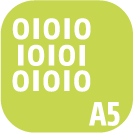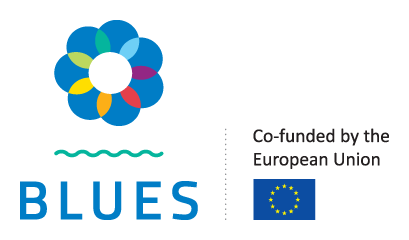The HELCOM BLUES project has seven activities:

Activity 1 – Effectiveness and measures
(Analyses to support effective regional measures)
Lead: Natural Resources Institute Finland (LUKE)
- Description of the improved assessment framework for sufficiency, effectiveness and economic impacts of measures.
- Data for assessing the effectiveness and costs of regionally coordinated actions.
- Literature review on marine valuation studies.
- Improved approach for assessing regional benefits.
- Regional benefit estimates of achieving good environmental status.
- Results of regional analyses of the use of marine waters and cost of degradation.
- Results for the improved sufficiency and effectiveness of measures analysis.
- Approach for and results of a regional cost-benefit analysis of achieving good environmental status for 1-2 environmental topics.
- Description of incentives and regulations around the Baltic Sea countries to mitigate nutrient loading.
Activity 1 assesses the effectiveness, sufficiency and socio-economic aspects of measures geared towards improving the state of the Baltic Sea. The activity builds on the approaches and data developed and gathered for the sufficiency of measures (SOM) and cost-effectiveness analysis conducted by HELCOM and the HELCOM ACTION project, further advancing the framework, methodology and data developed in these former projects and activities. Focussing on benefit estimates, a cost-benefit analysis of achieving good state for selected environmental topics is one of the activity’s main outcomes. The assessment framework enables region-level analysis for the Baltic Sea, while the general methods and tools may also be usable in other marine areas. In the longer term, the approaches and results produced within BLUES contribute to the development of effective measures in the later cycles of the Baltic Sea Action Plan(BSAP) and Programme of Measures (PoMs). Activity 1 utilizes the outputs and expertise from Activities 2, 3 and 4 to ensure that the approaches are relevant and appropriate to each environmental topic and results are interpreted correctly.

Activity 2 – Biodiversity
(Improved regional assessment of biodiversity)
Lead: HELCOM
- Regional bycatch risk maps and corresponding confidence evaluation for key species,
- Test cases evaluations for bycatch.
- Improved state indicator assessment for by-catch.
- Application of an improved methodology for state assessment for non-commercial fish.
- Application of size-based assessment for key fish species and interim threshold values.
- Operational indicators for zooplankton and phytoplankton, including threshold values and Pan-Baltic coverage.
- Approach for a more informative and integrated assessment of pelagic habitats.
- Improved harmonisation between HELCOM and OSPAR, assessment of trends in abundance of the Belt Sea harbour porpoise population.
- Test evaluation and threshold value application for the Belt Sea porpoise population trend in abundance evaluation.
- Expert-based qualitative assessments of abundance and distribution of the Baltic Proper population assessments.
- Adaptation of BEAT assessment flow to include new approved indicators.
- Review of food web assessment approaches and summary of knowledge on the Baltic Sea.
- Test application of adapted BEAT assessment flows to address food webs.
Activity 2 builds on the work of and gaps identified during HOLAS II and its subsequent 2018 environmental status assessment for the Baltic Sea – the State of the Baltic Sea report. The activity focuses on highly mobile species groups (such as mammals and fish), under-reported groups (cetaceans and non-commercial fish), and considers several aspects identified in recent HELCOM review processes to be knowledge and assessment gaps, and/or aspects of high regional priority, for example the “Future work on HELCOM indicators” process, a process which also included an assessment of gaps in relation to the EU Marine Strategy Framework Directive (MSFD) and the implementation of the 2017 GES Decision.
Consequently, the proposed work will be practically oriented – directly relevant for assessment –, have concrete outcomes, as well as ensure regional cooperation and contribute directly to the regional status assessment work done under HELCOM. In addition, the tasks build upon the outcomes of the 2018 updates of environmental status, GES determinations, assessments of environmental status, operationalisation of indicators on state, and improved and more complete regional assessments. The outcomes of this activity will provide direct input to Activity 1.

Activity 3 – Marine litter
Support for, and harmonisation of, regional work on MSFD Descriptor 10 (marine litter)
Lead: HELCOM
- HELCOM beach litter data compatible with EU coding,
- An overview of the effectiveness of EU regulations and actions within the HELCOM Regional Action Plan on Marine Litter.
- Beach litter assessment
- Standard Operating Procedures (SOPs) for monitoring of seabed sediment and water samples.
- Survey and dataset for consideration to calculate baseline and threshold values.
Activity 3 provides support to the work of the EU’s MSFD Technical Group on Marine Litter (TG Litter), as well as to promote the harmonisation of regional work on marine litter indicators and threshold values with TG Litter work. The activity further aims to conduct an assessment of the status of beach litter in the Baltic Sea, as well as to produce Standard Operating Procedures (SOPs) for monitoring microlitter. The SOPs will cover both the water column and the sediment, so that a more holistic perspective of the input of microlitter to the Baltic Sea can be obtained at a later stage. Both the work on beach litter and the SOPs builds on the outcomes of the concluded EU co-financed SPICE project and will be aligned with and support the ongoing work under EU TG Litter.

Activity 4 – Underwater noise
Support for, and harmonisation of, regional work on MSFD Descriptor 11 (underwater noise)
Lead: Tallinn University of Technology (TalTech)
- New soundscape maps
- Quantitative continuous noise assessment for HOLAS III
- Improve calibration standards for monitoring of continuous noise
- Quantitative impulsive noise assessment for HOLAS III
Activity 4 supports the implementation of GES assessment methodology according to Descriptor 11 of the EU Marine Strategy Framework Directive (MSFD). This will be achieved by updating the soundscape maps and by using the latest available regional information on noise sensitive species and estimating their exposure to the pressure of anthropogenic noise. Harmonisation of the measurement data through the standardization of calibration is of particular importance, in order to establish a solid foundation for successful underwater sound propagation modelling.
Impulsive noise is addressed through the development of the HELCOM registry on impulsive events in order to make it a planning tool, further enabling GES assessment for past events as well as for the management of future noise generating activities.
Furthermore, Activity 4 leads a quantitative assessment of continuous and impulsive noise in the Baltic Sea, building on previous work within the EU co-financed BalticBOOST and Life+ BIAS projects.

Activity 5 – Data accessibility
Lead: HELCOM
- Updated data model of the biodiversity database
- Updated biodiversity database web application
- Reporting format for mobile species abundance and distribution
- Fishing effort and intensity maps, publicly available and downloadable set of data products (maps).
- Beach litter assessment tool, including making available downloadable sets of assessment raw data and data products (maps).
- Beach litter assessment data products
Activity 5 seeks to improve data reporting arrangements for those part of the assessment for which data provisioning were identified as challenging during HOLAS II and are not yet covered for HOLAS III for the Second HELCOM State of the Baltic Sea report (2018) and which are not yet covered for the upcoming Third State of the Baltic Sea report.
The activity aims to develop data flow solutions for selected Descriptor 1 (biodiversity) indicator data flows which are currently lacking regular and fully functional data flow arrangement within HELCOM, namely those related to mammals and birds. Concrete achievements will include establishment of a regular annual or periodic reporting system of species observation supporting assessments of mobile species. The activity will also support Activity 2 on extending biodiversity assessments by providing platform for additional data collection such as on coastal fish and harbour porpoise.
The Activity will also prepare specifications for requesting and acquire fishing effort and intensity datasets to support cumulative impact assessment.
In addition, the Activity will support the D10 (Litter) related work by liaising and making use of the beach litter data collection activities happening at international and European level and by developing a regional assessment tool for Beach litter.

Activity 6 – Dissemination
Lead: HELCOM
The communication and dissemination activity provides communication backing to the other project activities, in order to facilitate their work and to assist in reaching their respective objectives, as an operational support enabling flow of information and communication within the project and with all its partners and stakeholders, in order to establish well-functioning workflows within the project. Furthermore, this activity also seeks to promote the visibility of the project among stakeholders who may have an interest in the project and its outcomes or who may want to stay informed about its progress. Finally, this activity will help disseminating the overall outcomes of the project, publicising and promoting the results in manner and formats best suited for further usage by the intended beneficiaries.

Activity 7 – Project coordination
Lead: HELCOM
Activity 7 concerns the internal project coordination as well as establishes a project-policy interphase for successful implementation, direct dissemination of progress and to secure future use of project results. A dedicated technical project coordinator will ensure that these required interactions are fulfilled. Overall Activity 7 works to ensure:
- Administrative support and coordination of workflows,
- Appropriate flow of information across and between the various Activities,
- Direct dissemination,
- Timely delivery of results,
- Technical reporting to the EU, and
- Financial coordination.
